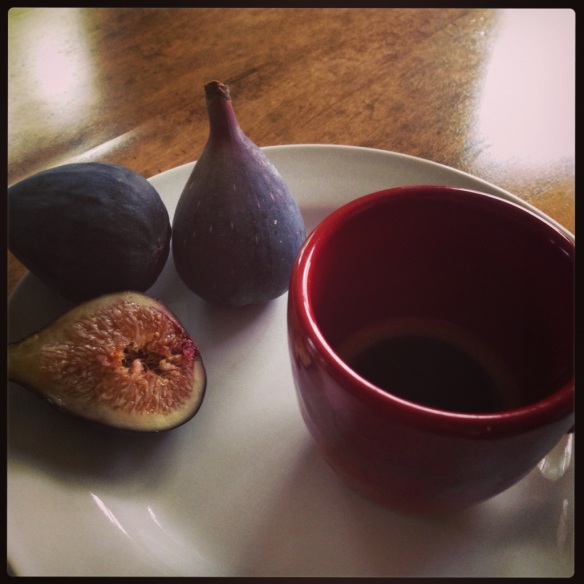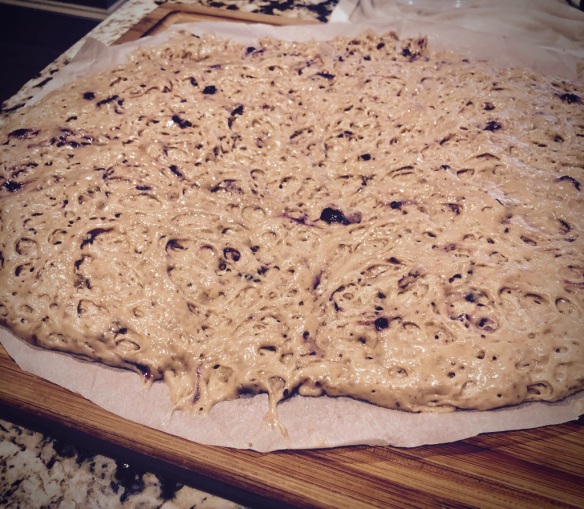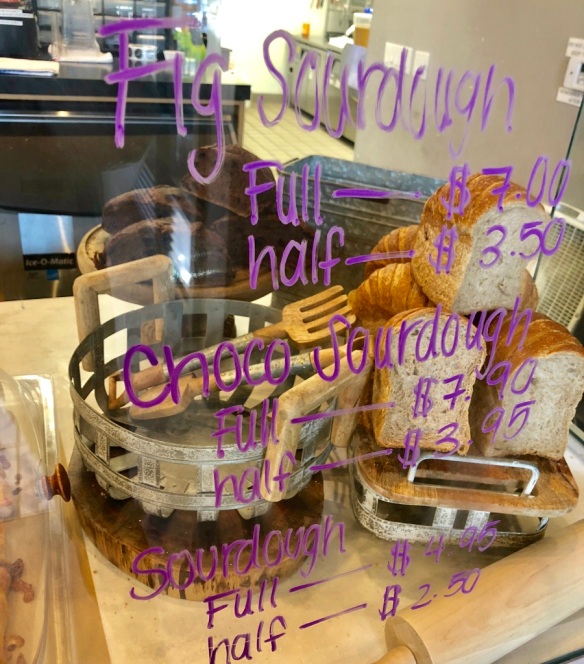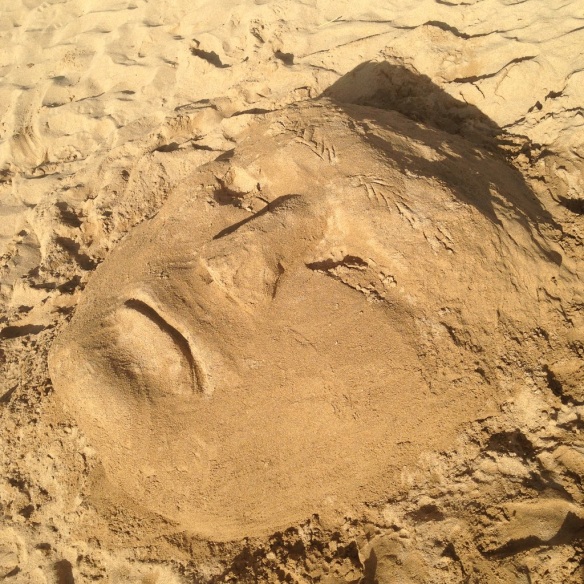
Fig season is officially over in my corner of California which is why, at the Farmer’s Market on Saturday, I bought the very last box of tender, tiny-seeded Black Mission jewels from my favorite farmer.
It was now, or wait until next year, to create the perfect loaf of fresh Fig Sourdough.
A few weeks back I’d seen an entirely new type of fig bread at a Parisian bakery. It sat on a pedestal, just out of reach, behind the front counter glass scrawled with purple marker: Fig Sourdough. The loaf, sliced open, was the mesmerizing deep brownish-purple of sweet fig jam. I’ve eaten fig bread many times, but it’s always been a golden-brown loaf, flecked with bits of dried fruit and usually walnuts. I didn’t buy the bakery loaf. I’m a baker and wanted the challenge of creating this new, beautifully colored bread on my own.
Undaunted by the lack of recipes for such a thing – every single baking website recipe calls for dried figs, and every photo looks like the fig-flecked golden-brown loaf I knew so well – I plunged into invention mode.
I added half a jar of fig jam to the initial flour, starter, and water mixture, assuming this would create my desired deep purple hue. It didn’t. I added the rest of the jam jar and waited for yeasty bubbles to rise, signaling the dough was healthy despite this new ingredient. Bread baking is an art, yes, but more than other types of baking, it’s a science. I tempted flour, yeast and water chemistry by interrupting it with jam.
The starter mix rose, although it didn’t develop the color I was hoping for.

I chopped Farmer Sean’s last box of figs and added these to the fully floured dough and proceeded to knead. This too did nothing to imbue the loaf with rich purple. I convinced myself that some sort of kitchen alchemy would happen during the rising process.
Something did indeed happen eight hours later when I tried to transfer the dough from its rising bowl to the baking stone.

The rise and fall of my dream was so complete I couldn’t help but laugh and send photos to the bakers in my bread circle, the same ones I’d casually texted that morning about creating a recipe for a new kind of bread, the friends who were all awaiting my baking secrets. What happened? Oh no! Should you add more yeast? More flour? What went wrong?
Sometimes I confuse bread making with trying to leaven world peace through community, or metaphor. I had already set out plates on my table, one for each of my walking distance neighbors who I planned to surprise with hot, fresh slices of this new kind of bread that I’d invented after imagining such a loaf might exist. The butter would be pooled to perfection in the time it would take to step from my house to theirs with this triumph.
You can’t always trust the old recipes, I’d say. You have to be willing to make mistakes, I’d laugh. You have to go out into the world to see and try new things.
Perhaps it was those three empty plates on the table, or my dogged belief that I could still make something resembling the bread I’d seen, or maybe I just wanted to keep #procrastibaking rather than write, but I was undaunted by the sticky flatness before me. Buoyed by the purple beginning to tinge the dough, I convinced myself I was a thirty-minute, 450-degree bake away from a Fig Sourdough that actually bore the color of its namesake.
I kneaded in another cup of flour and slid the dough into a flat dish with sides. For good measure I smeared more fig jam on top, sprinkled it with grated parmesan cheese, added chopped walnuts and drizzled it all with a blend of ground fresh chili paste and honey. What my loaf lacked in height and typical bread perfection, and it would make up for in flavor and creativity.
While waiting, I revisited the photo of my bread inspiration.

Surely, you immediately see what I did not. Yes, I guess there is also such a thing as Chocolate Sourdough. I’m guessing it’s a deep rich color. And that golden brown loaf on the right? Mmmm, you tell me.
I think it’s a fantasy Fig Sourdough I’m after when I write. This unicorn of breads beckons in the form of books I admire and the possibility that the writers I surround myself with will help unlock its recipe. I imagine a world where we all share bread and ideas respectfully with one another, and I write this world into existence. If I imagine it, others can too.
I’m writing these next eight weeks with a small group of students and I’ll confess we might all be trying to create fantasy bread. We want to make something amazing that we’ve always dreamed existed, maybe even thought we once saw or read, but it feels just out of reach at the moment.
We’re persisting. We’re failing. We’re succeeding, kneading, needing to keep on. I have every faith that fig season will return with us still here, awaiting new fruit with open palms, and older, wiser eyes.
With floured palms,
Catherine
I’ll be sharing some of my favorite bread makers over on my new website, CatherineKeefe.com Come for a visit. Stay for the crumbs.

























